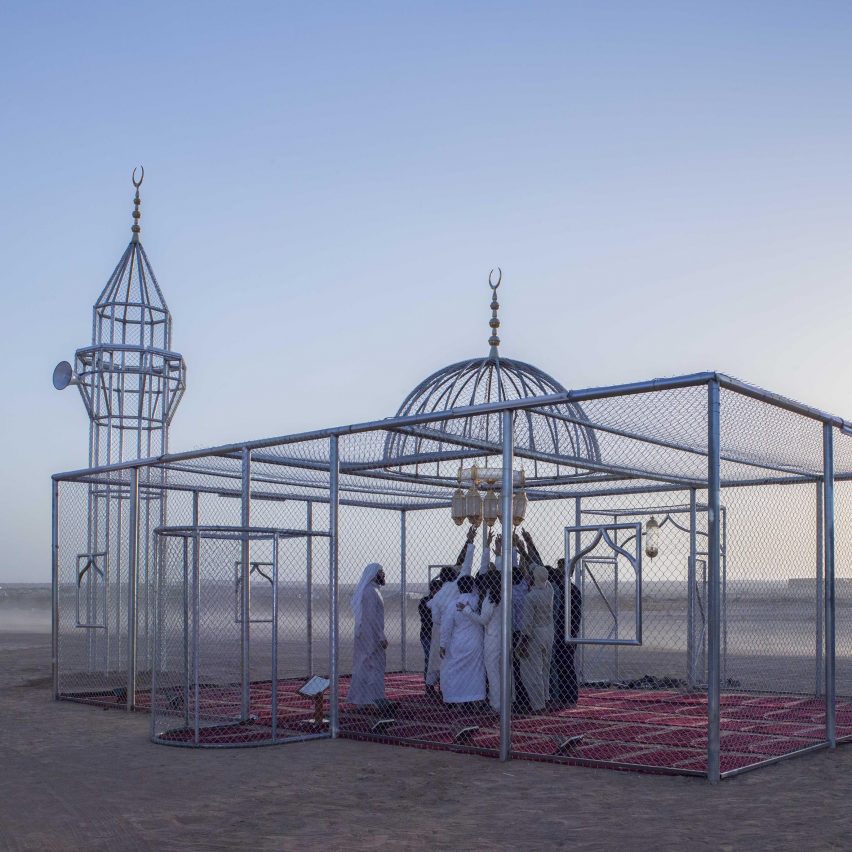
The traditional mosque is reimagined in fence-like steel wire in Saudi Arabian artist Ajlan Gharem's Paradise Has Many Gates installation, which has been awarded the V&A's Jameel Prize.
The award honours the best contemporary art and design inspired by Islamic tradition, and this year went to Gharem's dome-topped touring installation.
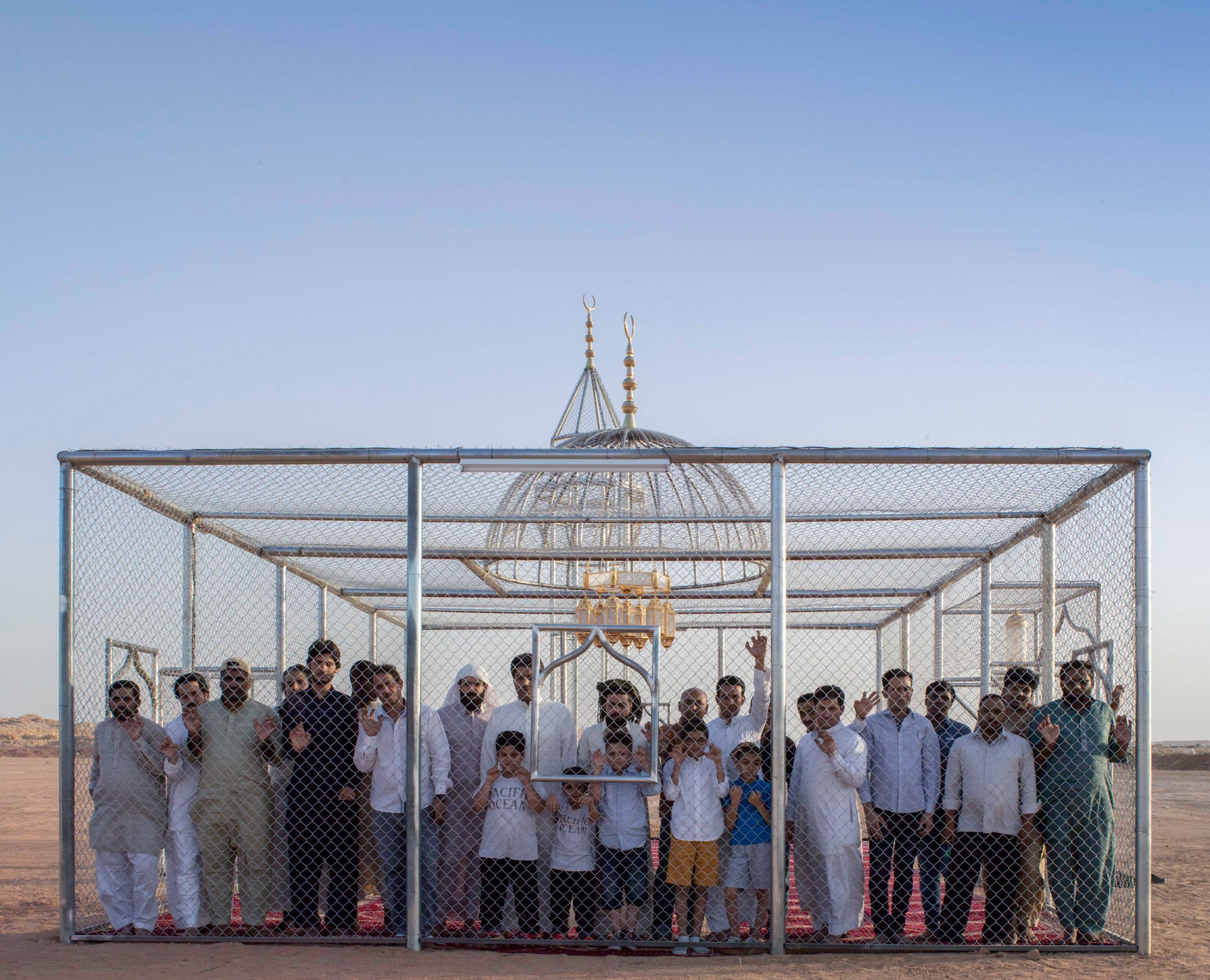
Since 2015, Paradise Has Many Gates has appeared in Saudi Arabia, Bahrain, the USA and Canada, and is always accompanied by a public programme of events such as performances, poetry, readings, prayers and discussions.
Gharem created the work out of chicken wire to recall imagery of refugee detention centres and border walls, and invoke associated feelings of anxiety.
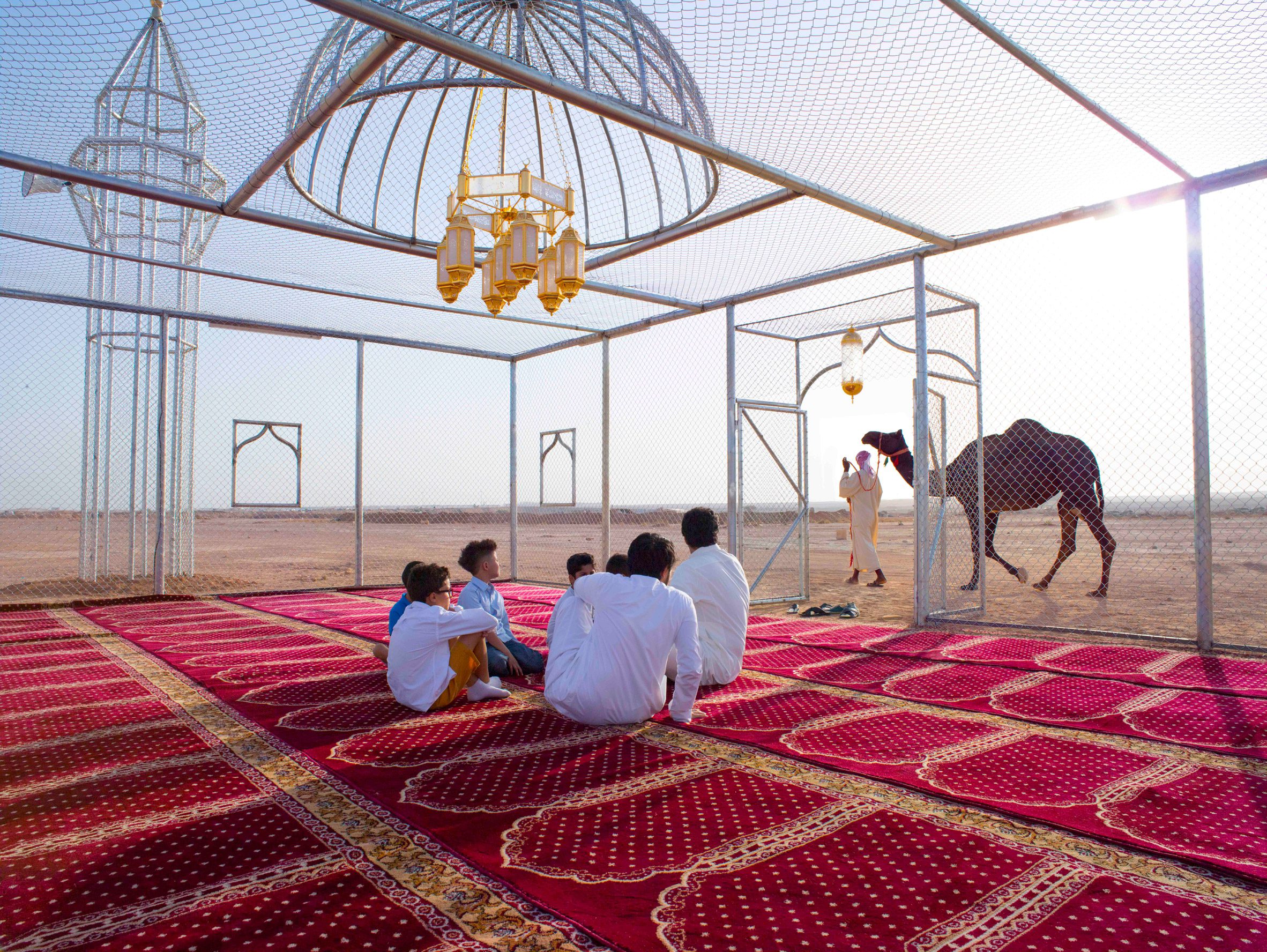
At the same time, he wanted to explore the implications of making the mosque literally transparent and open.
He believes Paradise Has Many Gates can help to demystify Islamic prayer for non-Muslims, while also presenting a challenge to political and religious authority, which thrives in secrecy.
"As this year's Jameel Prize winner, Ajlan Gharem's work speaks to global conditions and the experience of migrants, as well as being particularly resonant in its local context," said V&A director and Jameel Prize jury chair Tristram Hunt.
He described Gharem's work as being innovative in its use of material and having an ambitious scale.
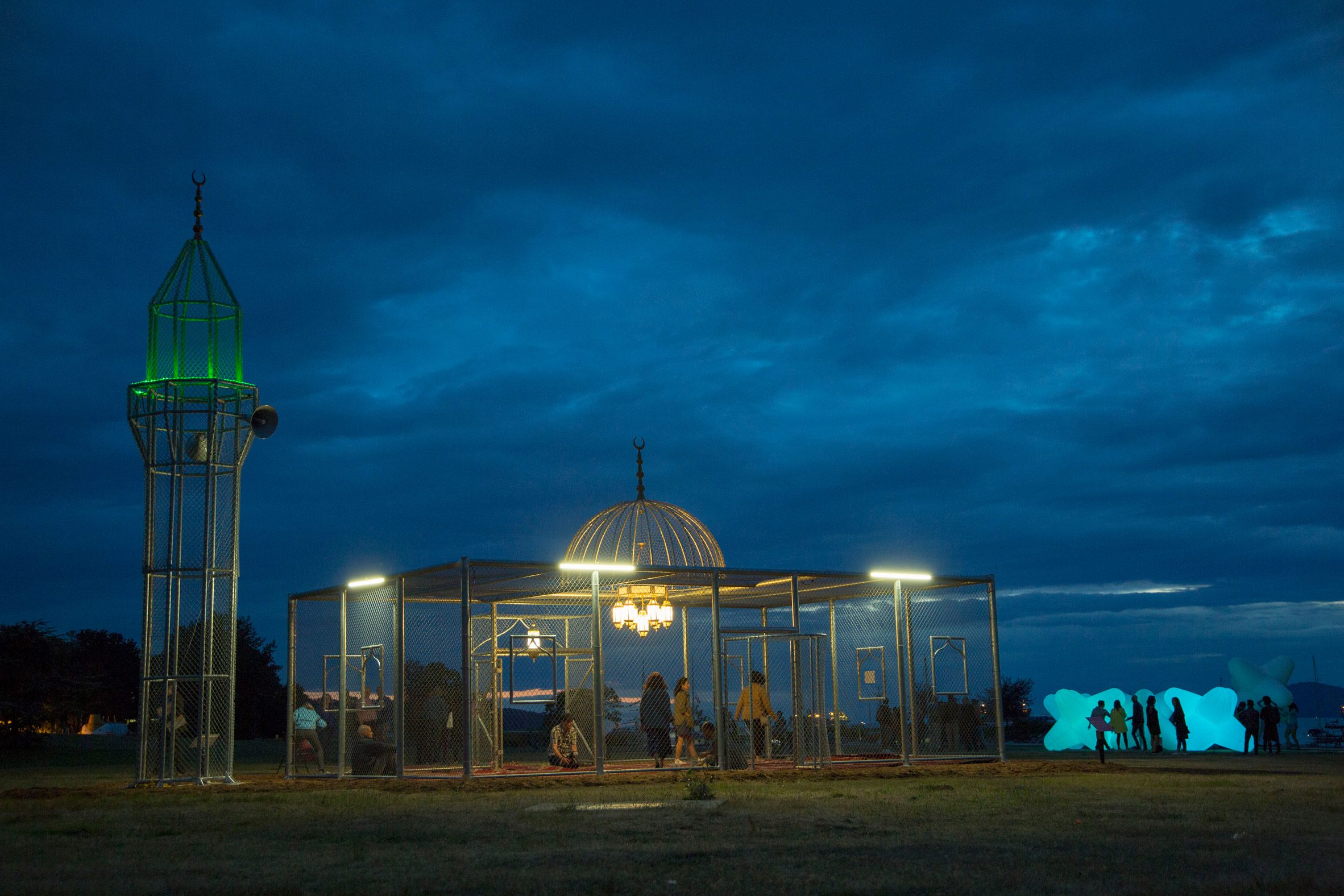
"The transparent wireframe references border fencing but has the effect of demystifying the mosque for non-Muslim viewers," continued Hunt.
"We also commend the use of the installation as a space for cross-cultural connection and community gathering."
Measuring 10 by 6.5 metres, Paradise Has Many Gates is topped by a dome and accompanied by a minaret that lights up in green.
The minaret includes a sound system that issues a call to prayer made of voices from different Muslim-majority countries.
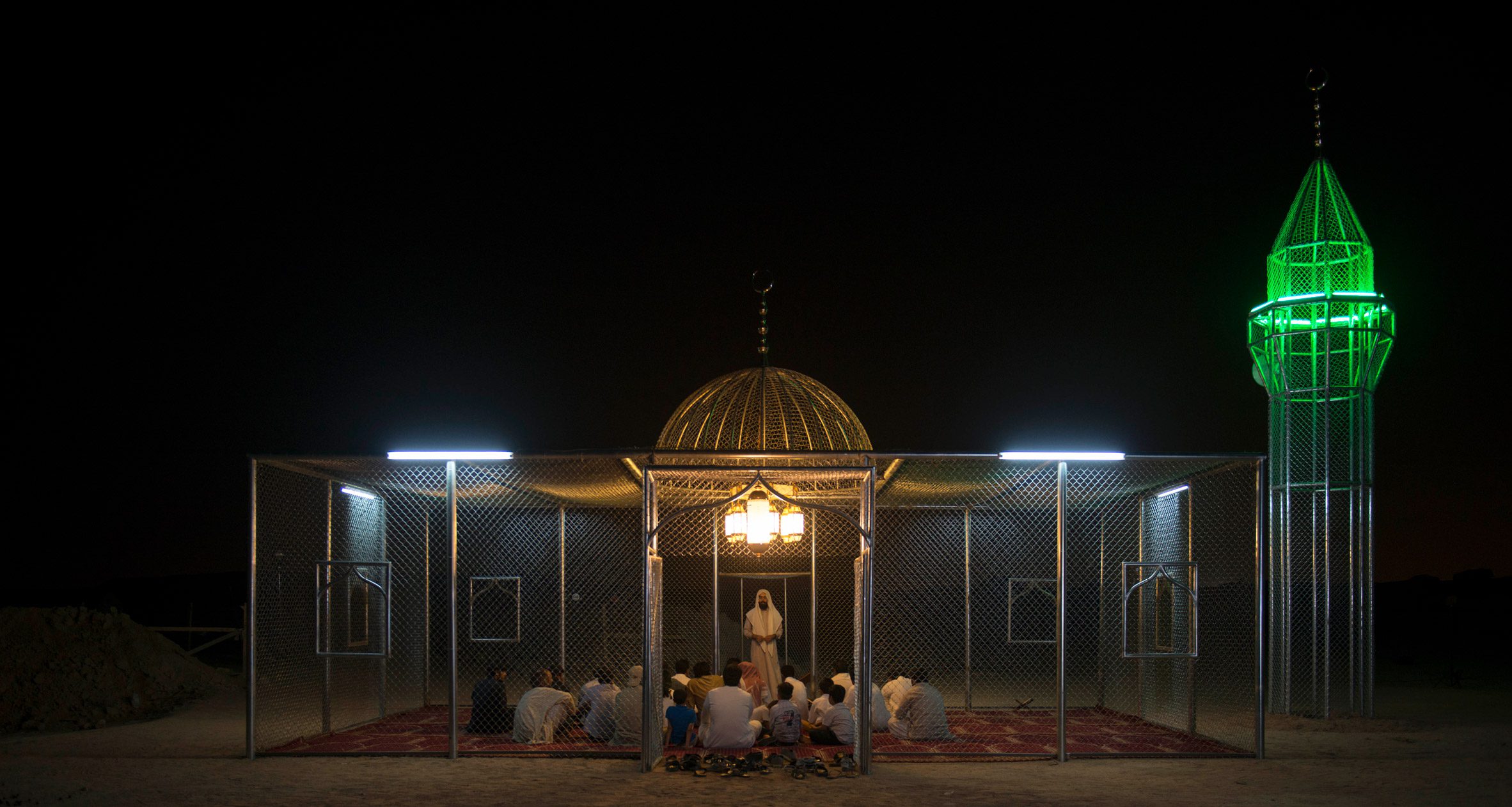
Gharem first erected Paradise Has Many Gates in the desert one hour's drive from the Saudi Arabian capital Riyadh for only one day before taking it down.
In its most recent form, the mosque was installed at Canada's Vancouver Biennale, on what had formerly been an Indian reserve, and the local First Nations community performed and displayed weavings at its opening.
The Jameel Prize is presented by the V&A and philanthropic organisation Art Jameel. It is now in its sixth edition and awards £25,000 to its top place-getter.
While the other finalists in this year's prize are all established designers and artists, Gharem has a day job as a maths teacher, and this is his first large-scale installation.
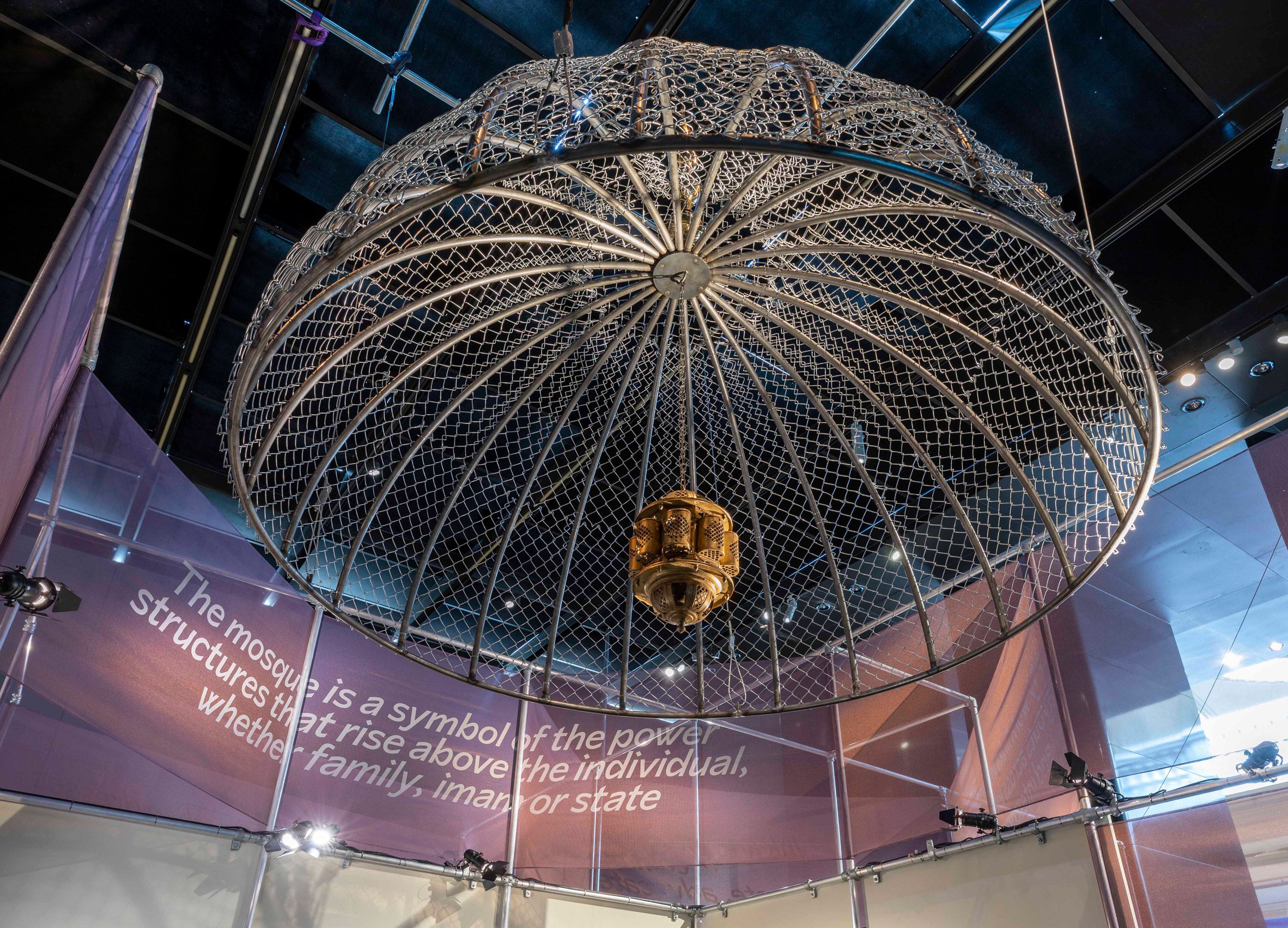
He recently co-founded Gharem Studio along with his brother, the contemporary artist Abdulnasser Gharem, to continue their work.
This year's Jameel Prize had a particular focus on contemporary design, and the finalists' works are on display at the V&A in an exhibition subtitled From Politics to Poetry.
Gharem's work is represented in the exhibition by the dome from the top of the structure, alongside photography of the completed installation.
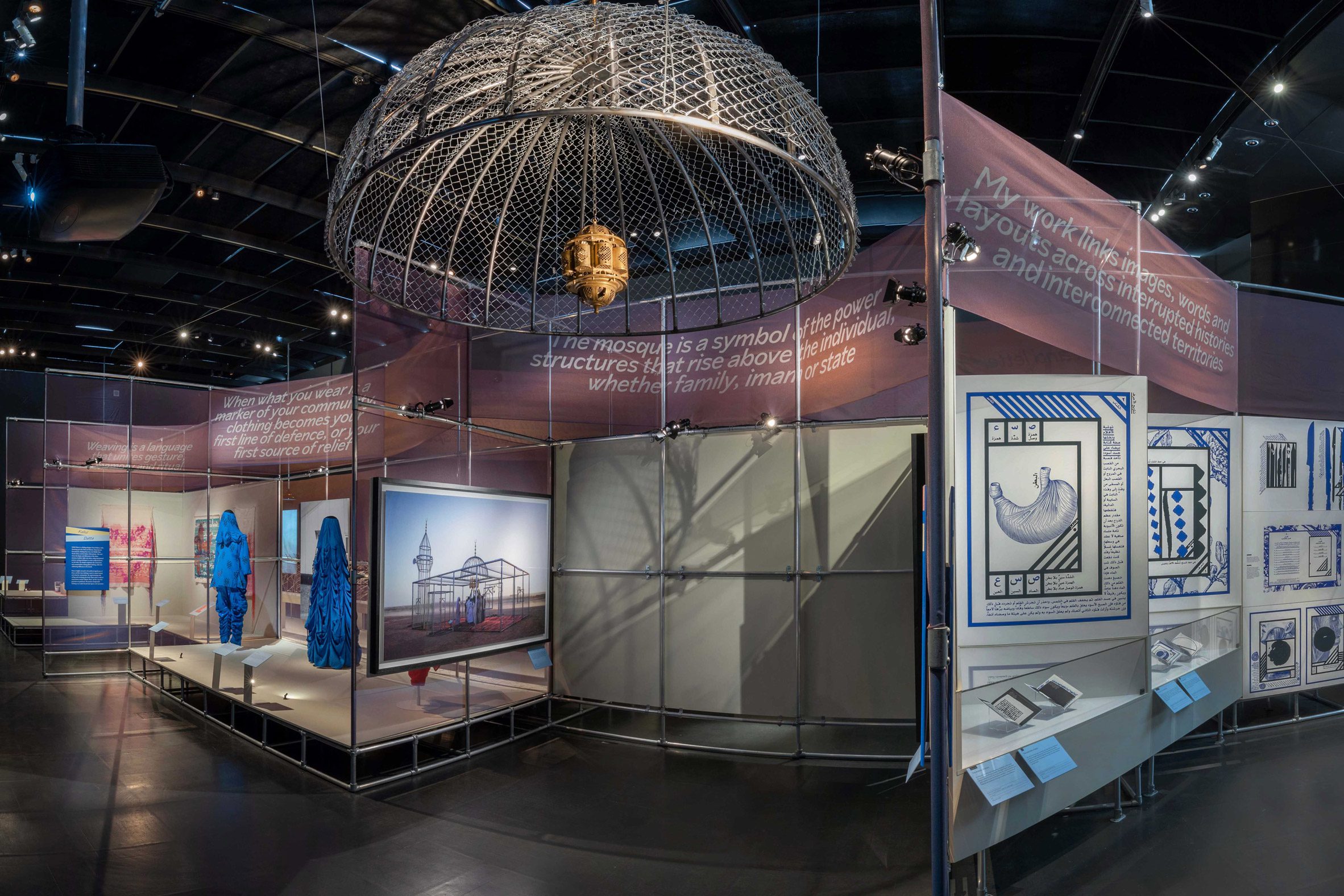
Also in the exhibition is the work of UK-based architect, artist and activist Sofia Karim, whose work Turbine Bagh uses the Tate Modern's Turbine Hall to shed light on Islamophobic attitudes and legislation in India.
Another featured finalist is Lebanon-based graphic designer and printmaker Farah Fayyad, who created a contemporary Arabic typeface, Kufur, based on historic Kufic script.
The exhibition includes samples from a screen-printing workshop that Fayyad and her colleagues set up in Beirut to support the protests of October 2019.
Art Jameel is also behind the contemporary art institution Jameel Arts Centre, which opened in 2018 with an understated design by Serie Architects.
The Jameel Prize: From Politics to Poetry is on at the V&A until 28 November. See Dezeen Events Guide for an up-to-date list of architecture and design events taking place around the world.
The post Ajlan Gharem explores Islamophobia and transparency with cage-like mosque appeared first on Dezeen.
from Dezeen https://ift.tt/3avqNPs
No comments:
Post a Comment